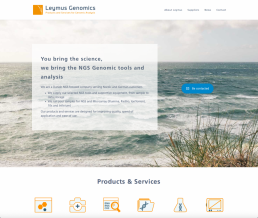IT Consulting Services: Strategies for Successful Digital Transformation
IT Consulting Services: Strategies for Successful Digital Transformation
Introduction
In today’s fast-paced digital landscape, IT consulting services have become essential for business professionals, organizational decision-makers, IT managers, marketing managers, legal professionals, and business owners seeking effective digital solutions. As organizations strive to enhance efficiency, manage risk, and drive innovation, expert guidance through IT consulting is critical. This article explores the core components of IT consulting, including cloud migration strategy, cybersecurity advisory services, technology risk management, enterprise IT infrastructure planning, and digital transformation consulting. By leveraging these services, businesses can build resilient, future-ready technology ecosystems that support their strategic goals.
Part 1: Understanding IT Consulting Services
IT consulting services encompass a broad spectrum of expertise designed to help organizations leverage technology for business success. These services range from strategic planning and project management to system integration, security assessments, and ongoing support. According to Wikipedia’s overview of IT consulting, the role of IT consultants is to analyze business requirements, recommend optimal technology solutions, and ensure seamless implementation.
Key areas in IT consulting include:
- Cloud Migration Strategy: Guiding organizations through the transition from on-premises systems to cloud-based platforms for scalability and cost efficiency.
- Cybersecurity Advisory Services: Providing risk assessments, compliance support, and defense strategies to protect sensitive data and IT assets.
- Technology Risk Management: Identifying, evaluating, and mitigating potential technology-related risks to ensure business continuity.
- Enterprise IT Infrastructure Planning: Designing robust, scalable, and secure IT environments that align with organizational objectives.
- Digital Transformation Consulting: Enabling businesses to embrace new technologies, streamline processes, and foster innovation.
Leading firms such as IBM Consulting and Deloitte offer comprehensive IT consulting services tailored to diverse industry needs. These services empower organizations to stay competitive and agile in a rapidly evolving marketplace.
Tips
- IT consulting services provide strategic guidance for digital growth.
- Consultants help identify the best technology solutions for your business.
- Core areas include cloud migration, cybersecurity, and risk management.

Part 2: Cloud Migration Strategy and Cybersecurity Advisory Services
One of the most transformative aspects of IT consulting is the development and execution of a cloud migration strategy. Migrating to the cloud allows organizations to benefit from increased flexibility, lower infrastructure costs, and enhanced collaboration. However, successful cloud adoption requires careful planning, assessment of existing workloads, and a clear understanding of compliance and security requirements.
IT consultants play a vital role in crafting a cloud migration roadmap, selecting appropriate cloud platforms, and managing the migration process. According to Ntiva, a well-structured cloud migration strategy minimizes downtime and ensures data integrity throughout the transition.
Alongside cloud adoption, cybersecurity advisory services are crucial for safeguarding digital assets. Consultants provide organizations with security assessments, vulnerability testing, and guidance on regulatory compliance. With the increasing frequency of cyber threats, robust cybersecurity measures are non-negotiable for modern enterprises. Firms like ScienceSoft and CGI offer specialized cybersecurity advisory services to address evolving risks and compliance mandates.
Tips
- Cloud migration requires a tailored strategy for each business.
- Cybersecurity advisory services protect against evolving digital threats.
- Compliance and data integrity are critical during cloud transitions.
Part 3: Technology Risk Management and Enterprise IT Infrastructure Planning
Effective technology risk management is a cornerstone of successful IT consulting services. As organizations become more reliant on technology, the potential impact of IT failures, data breaches, or system outages grows. IT consultants help businesses identify critical risks, evaluate their potential consequences, and develop strategies to mitigate them. This includes implementing disaster recovery plans, business continuity strategies, and regular risk assessments.
Another vital aspect is enterprise IT infrastructure planning. Consultants assess current IT environments, recommend upgrades or redesigns, and ensure that infrastructure aligns with business goals. The objective is to create a secure, scalable, and high-performing IT foundation that supports growth and innovation. As noted by Intellectsoft, strategic infrastructure planning is essential for maintaining operational efficiency and supporting digital transformation initiatives.
By leveraging expert guidance in risk management and infrastructure planning, organizations can proactively address vulnerabilities and position themselves for long-term success.
Tips
- Technology risk management protects against business disruptions.
- Regular risk assessments help identify and mitigate vulnerabilities.
- Infrastructure planning ensures scalability and operational efficiency.

Part 4: Digital Transformation Consulting and Future Trends
Digital transformation consulting is a rapidly growing area within IT consulting services. It involves reimagining business processes, customer experiences, and organizational culture through the adoption of advanced technologies. Consultants work with stakeholders to identify opportunities for automation, data-driven decision-making, and integration of emerging technologies such as artificial intelligence (AI), machine learning, and the Internet of Things (IoT).
Digital transformation is not just about technology—it’s about aligning IT initiatives with business strategy to drive innovation and competitive advantage. According to AIM Consulting, organizations that embrace digital transformation are better positioned to respond to market changes and customer demands.
Future trends in IT consulting include increased focus on sustainability, cloud-native development, and enhanced cybersecurity frameworks. As the digital landscape evolves, IT consultants will continue to play a pivotal role in guiding organizations through change and ensuring technology investments deliver measurable value.
Tips
- Digital transformation aligns technology with business strategy.
- Consultants help integrate AI, IoT, and automation into business processes.
- Staying ahead of trends is key to maintaining a competitive edge.
Conclusion
IT consulting services are indispensable for organizations seeking to navigate the complexities of modern technology. From cloud migration strategy and cybersecurity advisory services to technology risk management, enterprise IT infrastructure planning, and digital transformation consulting, expert guidance ensures businesses remain agile, secure, and competitive. By partnering with experienced IT consultants, organizations can turn technology challenges into opportunities for growth and innovation.
Key takeaways
- IT consulting services drive digital transformation and innovation.
- Cloud migration and cybersecurity are essential for modern enterprises.
- Risk management and infrastructure planning support business continuity.
- Digital transformation consulting aligns technology with strategic goals.
- Partnering with experts ensures technology investments deliver value.
IT Project Management: Strategies for Success in the Digital Age

Introduction: The Critical Role of IT Project Management
In today’s rapidly evolving digital landscape, IT project management is essential for organizations aiming to deliver innovation, efficiency, and competitive advantage. Whether you’re a business professional, IT manager, legal advisor, or business owner seeking digital solutions, mastering IT project management is crucial for steering projects to successful completion. This article explores the core components of IT project management, from risk management and stakeholder communication to budgeting, agile methodologies, and digital transformation planning. For a comprehensive introduction, visit Atlassian’s IT project management guide.
- What is IT project management?
- Why is it critical for business success?
- Key challenges and opportunities

Part 1: Risk Management in IT Projects
Effective risk management in IT projects is the cornerstone of delivering outcomes on time and within budget. IT projects are inherently complex, often involving multiple stakeholders, evolving technologies, and tight deadlines. Identifying, assessing, and mitigating risks early can prevent costly delays and failures.
Common risks in IT projects include scope creep, resource constraints, technological changes, and cybersecurity threats. Utilizing frameworks like the PMI’s Project Management Body of Knowledge (PMBOK) helps project managers systematically address risks. Modern tools, such as Asana and ProjectManager.com, offer risk tracking and reporting features.
- Identify risks during project initiation and planning.
- Use risk registers and assessment matrices for prioritization.
- Develop contingency and mitigation strategies.
- Communicate risks regularly to stakeholders.
Tips
- Early risk identification leads to better outcomes.
- Leverage risk management tools for visibility.
- Engage stakeholders in risk discussions.

Part 2: Stakeholder Communication Strategies
Successful IT project management hinges on clear and consistent stakeholder communication. Stakeholders—ranging from executives to end-users—have diverse interests and influence over project success. Tailoring communication strategies ensures alignment, manages expectations, and fosters collaboration.
Key techniques include stakeholder analysis, communication plans, and regular status updates. Using collaborative platforms like Wrike and Microsoft Project enables transparent progress tracking and feedback collection. For large-scale projects, town halls and interactive dashboards are effective.
- Conduct stakeholder mapping to identify influence and interest.
- Establish a communication plan with tailored messaging.
- Schedule regular updates and feedback sessions.
- Utilize collaborative tools for real-time communication.
Tips
- Understand stakeholder needs early.
- Communicate proactively and transparently.
- Use digital tools to streamline communication.

Part 3: IT Project Budgeting and Cost Control
Budgeting and cost control are pivotal for IT project management success. Accurate estimation, allocation, and monitoring of financial resources ensure that projects are delivered within budget and deliver expected value. Cost overruns are a common cause of IT project failures, often stemming from inadequate planning or unforeseen changes.
Best practices include defining a detailed project scope, using historical data for estimates, and implementing robust change control processes. Tools like Asana and Smartsheet provide real-time budget tracking and reporting. For more insights, explore TechTarget’s IT project management resources.
- Establish a baseline budget with clear assumptions.
- Monitor expenses regularly against the budget.
- Implement change control to manage scope and cost.
- Report financial status transparently to stakeholders.
Tips
- Define project scope and budget early.
- Track expenses continuously for early detection of variances.
- Use software tools for financial visibility.

Part 4: Agile Methodologies and Digital Transformation Planning
Agile methodologies have revolutionized IT project management by promoting adaptability, collaboration, and rapid delivery. Agile frameworks—such as Scrum, Kanban, and Lean—enable teams to respond to change, deliver incremental value, and engage stakeholders throughout the project lifecycle.
Digital transformation planning is closely linked with agile practices. Organizations embracing digital transformation must align IT projects with broader business objectives, prioritize customer experience, and foster a culture of continuous improvement. For a deeper dive, see Monday.com’s guide to IT project management and Coursera’s IT project management courses.
- Adopt agile frameworks for iterative development.
- Empower cross-functional teams for collaboration.
- Integrate digital transformation goals into project planning.
- Measure progress through regular reviews and retrospectives.
Tips
- Embrace agile for flexibility and speed.
- Align projects with digital transformation strategies.
- Foster a culture of learning and adaptation.

Conclusion
IT project management is a dynamic discipline that demands a blend of technical expertise, strategic thinking, and strong communication. From risk management to stakeholder engagement, budgeting, and agile practices, mastering these areas is vital for delivering successful digital projects in today’s business environment.
Key takeaways
- Effective risk management prevents costly project failures.
- Stakeholder communication is essential for alignment and success.
- Budgeting and cost control ensure projects deliver value within financial constraints.
- Agile methodologies and digital transformation planning drive adaptability and innovation.
- Leveraging the right tools and frameworks streamlines IT project management processes.
For more resources and professional development, explore the Project Management Institute’s certifications and Google’s project management certificate.
Managed IT Services: Modern Solutions for Secure Business Growth
Managed IT Services: Modern Solutions for Secure Business Growth
Introduction
In today's rapidly evolving digital landscape, managed IT services have become a cornerstone for organizations seeking to stay competitive and secure. As business professionals, organizational decision-makers, IT managers, marketing managers, legal professionals, and business owners look for digital solutions, the need for robust IT support, cloud computing solutions, cybersecurity services, and compliance management has never been greater. Managed IT services offer a comprehensive approach to handling a company’s technology needs, allowing businesses to focus on their core operations while experts manage their IT infrastructure. In this article, we explore the multifaceted world of managed IT services, including their benefits, key components like IT outsourcing and network management, and how they help organizations meet IT compliance and regulations.
Part 1: Understanding Managed IT Services
Managed IT services refer to the practice of outsourcing a range of IT functions to a specialized provider, known as a managed service provider (MSP). These providers deliver ongoing support, proactive monitoring, and management of IT systems, networks, and security, tailored to each client’s unique needs. The scope of managed IT services can include everything from cloud computing solutions and cybersecurity services to help desk support, disaster recovery, and network management.
By leveraging managed IT services, organizations gain access to skilled IT professionals, advanced technologies, and best practices without the overhead costs of maintaining a large in-house IT department. This model is especially beneficial for small and medium-sized businesses (SMBs) that may lack the resources to build comprehensive IT capabilities internally.
Managed IT services providers typically operate under a subscription-based model, offering predictable monthly costs and scalable solutions. This enables businesses to plan their budgets more effectively and ensures that their IT infrastructure evolves alongside their growth.
Tips
- Managed IT services involve outsourcing IT functions to expert providers.
- Services range from cloud solutions to cybersecurity and network management.
- Cost predictability and scalability are major benefits for businesses.

Part 2: Core Components of Managed IT Services
Managed IT services encompass a broad array of offerings designed to address the diverse needs of modern organizations. Some of the most critical components include:
- Cloud Computing Solutions: MSPs help organizations migrate to and manage cloud platforms, enhancing flexibility and scalability while reducing infrastructure costs. Learn more about cloud solutions at CDW Managed Services.
- Cybersecurity Services: With cyber threats on the rise, MSPs provide advanced security solutions, including threat detection, incident response, and ongoing vulnerability assessments. For in-depth information, visit Huntress Managed IT Services.
- IT Outsourcing: By outsourcing IT operations, businesses gain access to specialized expertise and resources, improving efficiency and reducing risk. More on this at Gartner MSP Guide.
- Network Management: MSPs monitor, maintain, and optimize network infrastructure to ensure high availability, performance, and security.
- IT Compliance and Regulations: Navigating complex regulatory requirements is essential. MSPs assist with compliance frameworks such as GDPR, HIPAA, and PCI DSS, minimizing legal risks and safeguarding sensitive data. See PwC Managed Services for more details.
These core components work together to create a secure, resilient, and future-ready IT environment for organizations of all sizes.
Tips
- Cloud solutions and cybersecurity are foundational elements of managed IT services.
- IT outsourcing provides access to expert skills and advanced technologies.
- Compliance management is crucial for legal and regulatory protection.
Part 3: Benefits of Managed IT Services
Adopting managed IT services delivers a wealth of benefits to businesses, ranging from cost savings to enhanced security and operational efficiency. Here are some of the most notable advantages:
- Cost Efficiency: Organizations can reduce operational expenses by outsourcing IT management, eliminating the need for significant capital investments in hardware, software, and personnel.
- Proactive Support: MSPs provide 24/7 monitoring and maintenance, identifying and resolving issues before they escalate into costly disruptions.
- Access to Advanced Technologies: Businesses benefit from the latest IT solutions and security practices without the burden of ongoing research and development.
- Scalability: Managed IT services can be scaled up or down based on business needs, supporting growth and adaptation to market changes.
- Enhanced Security: With comprehensive cybersecurity services, MSPs protect organizations from evolving threats and ensure data integrity.
- Focus on Core Business: Outsourcing IT tasks allows internal teams to concentrate on strategic initiatives, driving innovation and revenue.
These benefits collectively enable organizations to operate more efficiently, securely, and competitively in the digital age. For real-world examples, visit Datamation Top Managed Services Providers.
Tips
- Managed IT services reduce costs and improve operational efficiency.
- Proactive support minimizes downtime and disruptions.
- Scalability ensures IT resources align with business growth.

Part 4: Choosing the Right Managed IT Services Provider
Selecting the right managed IT services provider is a critical decision that can significantly impact your organization’s success. Here are key considerations:
- Experience and Expertise: Look for providers with a proven track record in your industry and expertise in areas such as network management, cloud computing, and cybersecurity.
- Service Offerings: Ensure the provider offers a comprehensive suite of services that align with your current and future needs, including IT outsourcing and compliance support.
- Security and Compliance: Verify that the MSP adheres to industry best practices and regulatory standards, providing robust cybersecurity services and compliance management.
- Scalability and Flexibility: Choose a provider that can scale services as your business grows and adapt to changing requirements.
- Support and Responsiveness: Evaluate the provider’s support structure, response times, and communication channels to ensure reliable assistance when needed.
Engaging with a reputable MSP enables organizations to leverage advanced technologies, mitigate risks, and achieve their strategic objectives. For more guidance, refer to ConnectWise: What is Managed IT Services?.
Tips
- Assess provider expertise, service range, and industry experience.
- Prioritize security, compliance, and scalability in your selection process.
- Reliable support is essential for long-term partnership success.
Conclusion
Managed IT services are indispensable for organizations aiming to thrive in a digital-first world. By leveraging cloud computing solutions, cybersecurity services, IT outsourcing, network management, and compliance support, businesses can ensure robust IT operations, safeguard sensitive data, and drive innovation. The right managed IT services provider acts as a strategic partner, empowering organizations to focus on growth while navigating the complexities of modern technology.
Key takeaways
- Managed IT services deliver expertise, security, and scalability to businesses.
- Core components include cloud solutions, cybersecurity, IT outsourcing, and compliance.
- Choosing the right provider is crucial for maximizing IT value and minimizing risk.
- Outsourcing IT enables organizations to focus on core business objectives.
BJF Advokater
Side til firmaet BJF Advokater

Description
- Identity
- Logo
- WordPress theme
- Custom photos from simonknudsen.dk
- Hosting
- Site
Creative campaign for Gonzo Media
Lenovo Campaign
User generated learning videos with integration to Youtube, Instagram and Facebook.
Campaign is offline and ran for 6 months in 2018.

Leymus Genomics
Description
Optimization, security enhancing and rebranding of existing Wordpress solution.
Website
Maelk
Description
Social Media - reinvented. Instead of exposing yourself, it's about your friends and family.
Swiftly ask for an image or video and get a fast response.
The App was implemented and build using only Microsoft technology: Xamarin, Azure( WAF, Media Service, Application Gateway, MS SQL, CosmoDB), Visual Studio Mobile Center - On a Mac!
App
Download the App in iTunes Store
HALDGUTTENBERG
Description
Identity, logo, Wordpress theme, custom photos from http://www.simonknudsen.dk, hosting.
Site
Find Advokat
Description
Bespoken website implemented in http://sailsjs.com.
Get offers from the best lawyers in certain fields.









